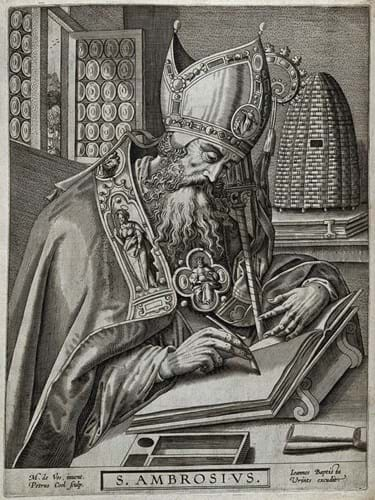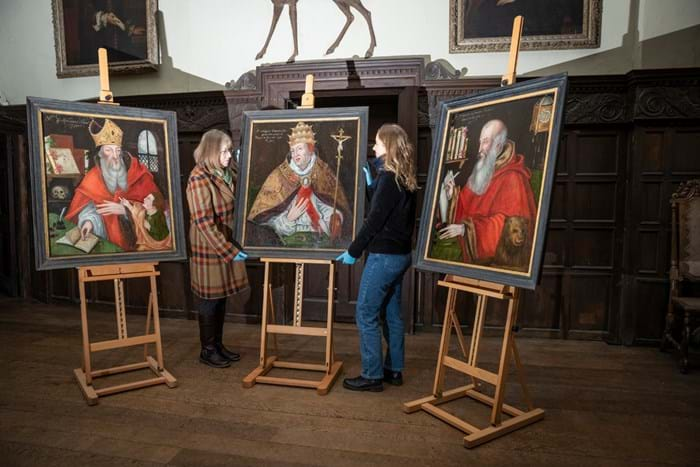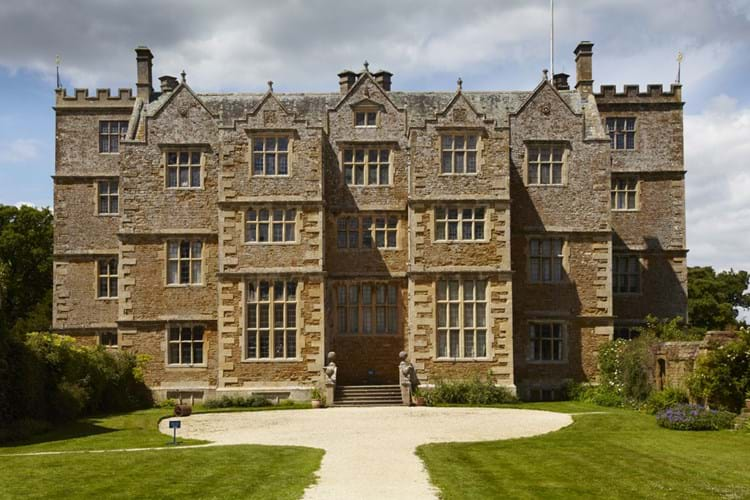The missing picture was one of a group of four (the other three remain) and have been in the Jacobean manor house since it was built between 1607-12.
The missing fourth painting is of Saint Ambrose, Bishop of Milan. The National Trust found a magazine article dated 1919 detailing the four paintings but it is not clear what happened to the picture after that point.

An engraving of Saint Ambrose. The composition of the portraits at Chastleton House is similar to those of engravings by printmaker Pieter Cool (produced c.1565-80) and it is possible that this was the source material. Cool was influenced by the Flemish artist Maarten de Vos (1532-1603).
Ruth Peters, senior collections and house officer at Chastleton, said: “We have an idea of what it would look like as the paintings are based on – but are not an exact copy of – a set of four Flemish engravings.
The last members of the family to live at Chastleton before it came into the care of the National Trust have no memory of the fourth painting. It might have been sold or given away and so could be hanging on somebody’s wall, unrecognised.”

The remaining three pictures of the set in Chastleton House are of Pope Gregory I, Saint Jerome and Saint Augustine Bishop of Hippo. Image credit: National Trust James Dobson.
The group depicting Catholic saints are thought to have been commissioned around the time of the Gunpowder Plot and could originally have been used as teaching devices relating to the history of the 'Fathers of the Church', rather than for worship.
Peters added: “The estate was owned by Robert Catesby, infamous for masterminding the Gunpowder Plot of 1605, a Catholic conspiracy to blow up Parliament and kill the protestant King James I. He had sold the estate three years earlier to Walter Jones, a lawyer whose family had gained their wealth in the wool trade.”
Catesby lived on at Chastleton until his execution in 1605. Jones then demolished the buildings and between 1607-12 built the large manor house which stands today.
But despite those links, the National Trust said displaying paintings such as the ‘Fathers of the Church’ was not necessarily a sign of religious protest.
“We don’t know a lot about Walter Jones or the intended use of the paintings at the time, but religious works hanging in the domestic homes were not always symbols of recusancy. The ‘Fathers of the Church’ may have innocently been seen by the family as historical figures. Religious images were officially banned from churches, but not necessarily the home and images were allowed if used as teaching devices – but not for worship.”
According to the Trust the paintings were produced in Britain in the late 16th or early 17th century with pigment analysis showing colours which were all available at the time. Dendrochronology – an analysis of tree rings in the timber boards – found that several of the panels are from the same tree, a Worcestershire oak felled in about 1563.
However, despite detailed analysis and research, it has not yet been possible to identify who painted the three portraits.
Rebecca Hellen, the Trust’s senior national conservator of paintings, said: “We believe they were painted by native English or Anglo-Netherlandish artists. Sets of paintings were often worked on by artists and their assistants together. There had been a substantial influx of painters from the Netherlands initially into London and then other parts of the country. While the paintings stylistically share many qualities with contemporary English paintings, they also have qualities of Anglo-Netherlandish artists.”






